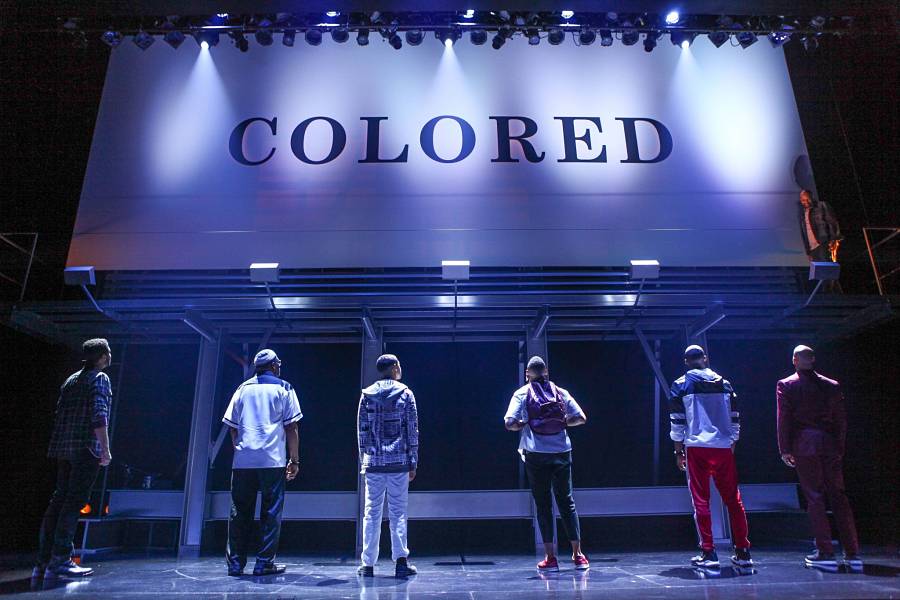Even as white America wakes up like never before to the realities of its biased and oppressive institutions, there’s a hugely traumatic aspect of the Black experience that remains largely unseen and undiscussed. The United States has placed its Black citizens in a form of emotional incarceration from which we desperately want to be freed. Black people learn from a young age that our very presence is seen as a threat, and our emotions, when they aren’t completely invisible, can be terrifying to our white counterparts. This conditions us to understand that self-expression is both dangerous and futile, like staring into the sun while asking to not go blind.

As early as grade school, I can remember having to control my emotions in a way my white peers didn’t. My frustration or anger was met with a swift punishment instead of care and understanding. Adults treated my adolescent emotional life as that of someone much older than myself, holding me to a higher standard than my white classmates. That in turn caused me to grow up more quickly and abandon my childish ways long before I had naturally developed out of them. My skin color made me a man when the rest of me was still a boy.
As it turns out, a childhood spent mimicking adult behavior, wearing an array of masks, and having to play multiple characters for survival lends itself quite well to the craft of acting, which is what I ended up studying in college. It was there that I was first exposed to the classic canon of playwrights like Anton Chekhov, Arthur Miller, Henrik Ibsen, Tennessee Williams, and, my favorite, Shakespeare. I grew to appreciate these amazing writers, but I didn’t see myself in their prose. I longed for work I could hold up like a mirror to be able to see my reflection, but I couldn’t find it. Where were the people who looked like me, spoke like me, and were from the kind of neighborhoods I was from?
When I was halfway through my sophomore year, my old neighborhood was thrust into the national spotlight. I saw news coverage of a young Black man named Sean Bell who had been coming home from his bachelor party when police officers shot him dead. The news reports became a surreal nightmare as I began recognizing the streets and stores in the background. Sean Bell was murdered in Jamaica, Queens, right where I partly grew up. Sean shared my hometown, my skin color, and we were only four years apart. I was suddenly flooded with emotion that I could no longer contain for the benefit of white society, but I didn’t know where to channel the ocean of rage and sorrow that suddenly drowned me.
Though I had already found success as a slam poet, I knew that no poem would be able to contain everything I suddenly needed to say. What I couldn’t find in Miller or Williams or Ibsen, I decided to create myself. I felt I needed to tell a story that humanized Black men, showed our complexities, and valued our feelings. I needed to create characters who embodied the emotions of myself, and my father, my grandfathers, my uncles, my best friends, and many other men from neighborhoods I’ve lived in. My ultimate goal was to foster empathy. Because I wanted to be seen. I wanted to help create a world in which the lives of Black men are as valuable as their white counterparts. Fueled by angst, like an architect I began to piece together fragments of poems, monologues, and thoughts I had written. Out poured the first draft of the play that would become Thoughts of a Colored Man.
Like so many Black artists who came before me, writing has become a safe and productive outlet for the feelings I was taught to suppress. But as much as the potent brew of suppression and oppression serves as the Black author’s loyal and faithful muse, it also confines the scope of our creativity. If our work isn’t fundamentally rooted in the notion of Blackness as a (tragic) deviation from the mainstream, it rarely reaches a white audience. Thus, we tend to be rewarded for depicting the harshest realities of the Black experience while ignoring its beauty. In art, our trauma is fetishized and romanticized while our joy is dismissed. The end result is a society that views the Black experience as a dreary monotone, while consistently penalizing Black people for expressing the totality of their emotional lives.
Now we find ourselves in a moment defined by the murders of Ahmaud Arbery, Breonna Taylor, George Floyd, and many others. Our collective outrage has been exacerbated by the ugly on-camera antics of Amy Cooper and her ilk, not to mention the outsized impact the coronavirus is having on communities of color. Just as troubling has been the lack of media attention on a growing number of deeply suspicious hangings of Black and brown people, which look exactly like modern-day lynchings but which, curiously, have been deemed suicides by authorities.
Three presidential administrations have come and gone since the murder of Sean Bell first compelled me to put pen to paper, and I’m still grappling the exact same realities as a Black artist in America today. Like all playwrights, I want my work to be produced. I want audiences to see it. I want it to resonate. But my play’s enduring relevance has come at much too high a cost.
I find myself longing for a day when my play feels dated. I want our stories of racism and systemic oppression to require period costumes and sets and be filed under “historical fiction.” Even more than that, I long for the day when I have the same chance of getting a producer to read my sci-fi epic as I do my tragedy. I long for a day when my responsibility to reflect the “Black experience” affords me the right to paint with each and every color my white contemporaries have access to.
Now, as white America wakes up, I no longer just long for that day—I can actually see it. It’s glimmering, not so far in the distance. I don’t choose to see it. I need to see it, because optimism is my weapon in our battle against a society that too often tries to steal our joy. And unlike the sun, the bright light of the future I can stare into without going blind.
Keenan Scott II is a playwright, poet, actor, director, and producer raised in Queens and Maryland. He is a graduate of Frostburg State University.
Creative credits for production photo: Thoughts of a Colored Man, directed by Steve H. Broadnax III, choreography by Millicent Johnnie, scenic design by Robert Brill, costume design by Toni-Leslie James and Devario Simmons, lighting design by Ryan J. O’Gara, sound design by Mikaal Sulaiman, projection design by Sven Ortel, music by Te’La and KAMAUU.





